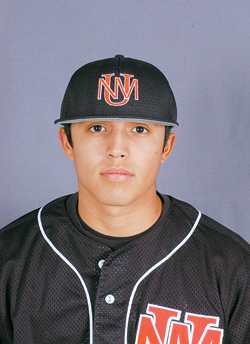Batted Balls to the Future
September 25, 2012
Over four years ago, we started using our play-by-play data to derive college batters’ batted ball distributions in a number of different ways. Here's what we wrote in a Hardball Times article back in 2008:
Taking all batted balls into account, [Vanderbilt OF Dominic] de la Osa, a right-handed batter, is spraying the ball all over the place, going to the opposite field nearly as often as he pulls it. However, it would appear that his home run power is almost exclusively to pull. Here's a look at his batted-ball distribution for last season and this season, compared to his two-year total for extra-base hits: LF CF RF
2007 45 31 36
2008 20 11 20
XBH 39 10 7
His circuit clouts present an even more dramatic split: Of the 25 in the last two years for which we have directional data, 21 (including all five this year) went to left. There's no doubting that de la Osa has "plenty of power," but it would appear that it's highly concentrated to pull. |
| Kris Bryant (RHB, San Diego) 2012 vs RHP | |||||||||||
LF: 39.2% | CF: 24.2% | RF: 12.5% | |||||||||
3B: 10.0% | SS: 6.7% | 2B: 4.2% | 1B: 3.3% | ||||||||
...and where is he most likely to hit the ball when facing a left handed pitcher?
| Kris Bryant (RHB, San Diego) 2012 vs LHP | |||||||||||
LF: 34.8% | CF: 26.1% | RF: 21.7% | |||||||||
3B: 2.2% | SS: 8.7% | 2B: 6.5% | 1B: 0.0% | ||||||||
(For extra insight, mouse over the percentages to compare each number to the Division I average for right- handed batters.)
Why is this important? Well, for opposing college coaches, we suspect it could be a big help when positioning their defenses. For MLB scouts, it can assist in better defining a prospect’s tendency to pull the ball, or his ability to hit with power to the opposite field.
And for the rest of us simple fans? Hopefully it can help point out where to sit in the bleachers to catch
that home run ball.
